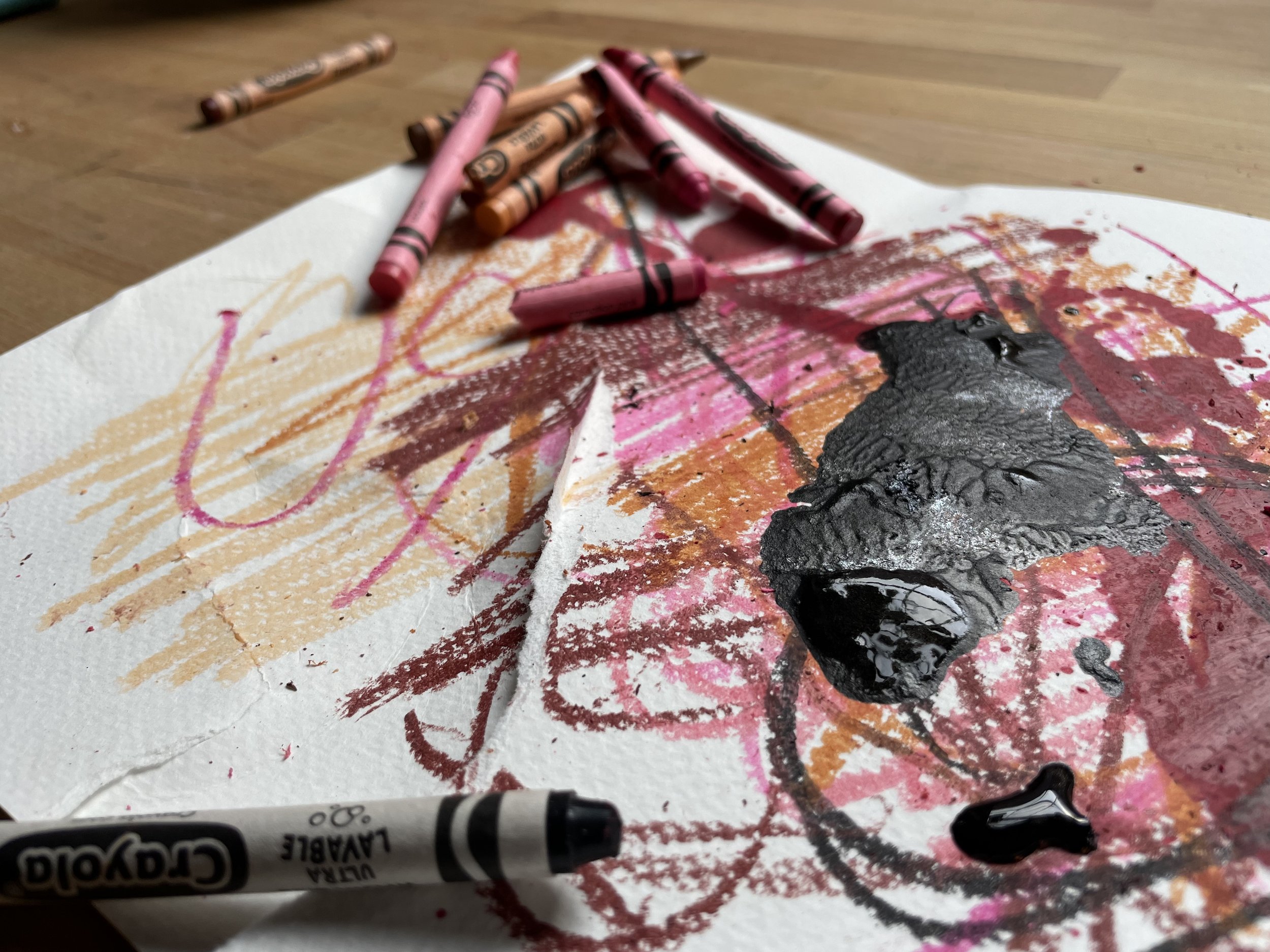How to Integrate Your Shadow with Creative Play
“in spite of its function as a reservoir for human darkness—or perhaps because of this—the shadow is the seat of creativity.”
What is the shadow self?
We hear the term “shadow work” utilized among mental wellness communities, but what does it mean? The shadow is part of a theory coined by Swiss psychoanalyst and psychologist Carl Jung. The shadow is an archetype that he believed represented the dark hidden aspects of our psyche- the parts of ourselves that we try to hide or repress because they don’t conform to societal expectations.
Why do we deny our shadow aspects and dark impulses?
In our society, the shadow self is often seen as “bad” or undesirable, darker impulses which we must hide or repress. As a result, many of us grow up being told to "play nice" and be polite, as society deems these "acceptable" behaviors.
When we experience less pleasant human emotions, we are often told to go to our rooms and may even be punished. (That is not to say that abusive behaviors should be tolerated. However, there is always a message behind the behavior that needs to be understood and validated.)
As time goes on, we unconsciously learn to push those parts of ourselves away because they are undesirable. "When I am happy, I am loved. When I am sad, I am unwanted." Over time this underlying messaging seeps in; we can’t be the full expression of ourselves because people won’t love us if we show these sides of ourselves. Therefore, internalizing our trauma and pain, we learn to wear masks.
Where does the shadow go when we deny it?
These "unacceptable" thoughts and feelings are banished to the deepest parts of our psyche, only to emerge through unconscious dysfunctional defense mechanisms that desperately aim to protect us from these “dangerous” thoughts, feelings, and emotions. However, denying the shadow doesn’t remove its unconscious influence on our lives and relationships.
Shadow repression can show up as harsh judgments toward others, addictive behaviors, spiritual bypassing, anger issues, playing “victim,” unacknowledged biases, and or prejudices, to name a few.
“The shadow is a moral problem that challenges the whole ego-personality, for no one can become conscious of the shadow without considerable moral effort. To become conscious of it involves recognizing the dark aspects of the personality as present and real. This act is the essential condition for any kind of self-knowledge.”
— Carl Jung, Aion (1951)
So how can we invite the shadow to play, and why should we?
We want to find ways to invite the shadow to come out and be safely integrated into our lives to raise our awareness of these unconscious behaviors. Awareness then opens the gateway for change to occur.
One of my favorite ways of inviting the shadow to play is through art and creativity. Check out the directive below.
How to Safely Invite The Shadow Self to Play
Grab the ugliest art materials you have (ugly paper, displeasing art materials, atrocious colors) and create the most hideous, most disgusting piece of art you have ever made in your entire life.
Once you’re done, just notice. Try not to judge or criticize anything that comes up; there’s no wrong or right.
Journal about it. How did it feel to make something ugly? Was there any resistance? What did I learn about my relationship with the shadow?
This is an invitation to start playing with this aspect of yourself, which isn’t ugly at all. It’s part of what makes you human. It can help you understand more profound aspects of your psyche and be integrated into your whole body. When you invite the shadow for a safe playdate, you gain awareness and open up the doors for change.
Interested in learning more about the powers of therapeutic art making? Check out my upcoming Fundamentals of Therapeutic Art Making Training.
Citations
Swan-Foster, N. (2018). Jungian Art Therapy: A guide to dreams, images, and analytical psychology. Routledge.

